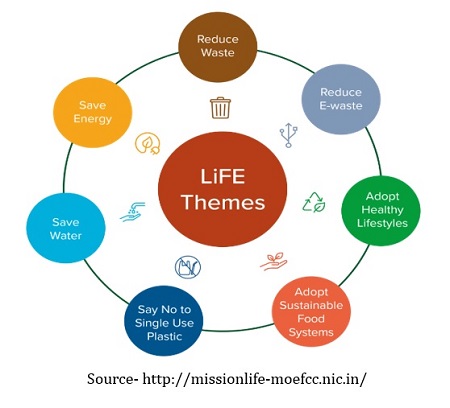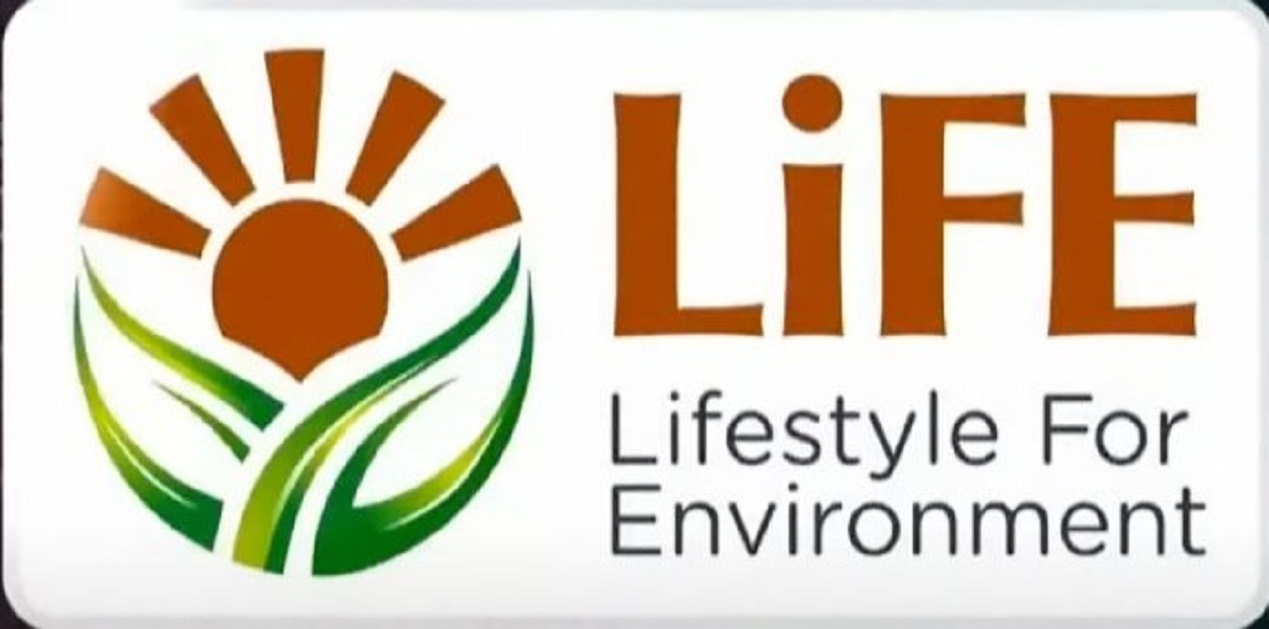Introduction
Our climate is changing at a rapid pace. Climate change is a term which refers to long term shifts in temperatures and weather patterns.[1] There are two major reasons for such shifts. These long-term shifts in climate occurs either due to natural causes which are changes in sun’s activity or large volcanic eruptions or they occur due to human activities which mainly involves burning of fossil fuels such as coal, oil, and gas.[2] Unfortunately, since the 1800s the latter has been the dominant factor of the earth’s changing climate.[3] Science has time and again reiterated that human activities are releasing greenhouse gases into the atmosphere which are warming the world faster than imagined.[4] Due to this, the average temperature of the earth’s surface is now about 1.1 degrees Celsius warmer than it was before the industrial revolution began.[5] The consequences of these changes have been disastrous. From sea-level rise to ocean acidification, melting of glaciers, biodiversity loss, extreme weather events, water scarcity etc. have ravaged the human life and the planet itself. These events are further going to become much more severe and frequent.
Climate governance has been at the core of dealing with this crisis. It did not take much time for the world to realize that climate change was a global problem and hence required a global concerted action. While there is a lot that is happening on this front, Conference of the Parties popularly known as the COP has been the ultimate game-changer in taking these actions forward. A significant outcome of one of the COPs has been the Paris Climate Accord of 2015, which entails to hold the increase in the global average temperature to well below 2 degrees Celsius above pre-industrial levels and pursue efforts to limit the temperature increase to 1.5 degrees Celsius above the pre-industrial levels.[6] This is because overshooting the 1.5 degrees Celsius target will result in irreversible adverse impacts on certain ecosystems with low resilience, such as polar, mountain, and coastal ecosystems, impacted by ice sheet, glacier melt, or by accelerating sea-level rise.[7] So one can very well understand the situation the world would be in when it crosses the 2 degrees Celsius mark. However, the world seems to be on the verge to breach the 1.5 degrees Celsius target. As per a new report published by the World Meteorological Organization (WMO), global temperatures are likely to surge to record levels in the next five years fuelled by heat-trapping greenhouse gases and a naturally occurring El-Nino event.[8] The report, however, does not imply that the world will permanently exceed the 1.5 degrees Celsius target as specified in the Paris Agreement which refers to long-term warming over many years.[9] It is however being argued that through this report the WMO has sounded the alarm that the world will breach 1.5 degrees Celsius target on a temporary basis with increasing frequency.[10] This will accelerate sea-level rise, extreme weather events, and will affect the vital ecosystems.[11]
Climate diplomacy is happening but it has its own limitations. A major divide between the developed and the developing nations exists on the climate negotiations front. The fundamental contentions between the two groups of countries are the importance of the principles of equity and common but differentiated responsibilities, respective capabilities and historical responsibilities, as well as the transfer of means of implementations, finance and technology from developed to the developing countries.[12] This has led to slowing the pace of the desired results which is needed to save humanity and the planet. While mitigation has been the dominant agenda in these negotiations, adaptation and getting financial assistance for the impacts of climate change by the most vulnerable countries have gained momentum in the past few years. However, the fact that individuals and communities can also contribute to this fight by changing their behaviour and lifestyle has been given little to no attention.
According to the United Nations Environment Program (UNEP), if one billion out of the global population of around eight billion adopt eco-friendly behaviours in their daily lives, global carbon emissions could drop by approximately 20 percent.[13] Understanding the gravity of this action, India at the UN Climate Change Conference in Glasgow (COP 26) in 2021 articulated the concept of “Lifestyle for the Environment” (LiFE) with an aim to make it a global movement. Hence, it becomes important to delve further and know more about this movement.
Lifestyle for the Environment (LiFE)
The concept of LiFE was introduced by the Honorable Prime Minister Shri Narendra Modi at COP 26 in November 2021. On June 5, 2022, also known as the World Environment Day, India furthered the vision of LiFE by launching the LiFE Global Movement.[14] The idea behind this was to create a global mass movement for “mindful and deliberate utilization, instead of mindless and destructive consumption” to protect and preserve the environment.[15] The movement aims to nudge individuals and communities to practice a lifestyle that is in sync with nature and does not harm it.[16] For instance, the movement urges individuals to adopt simple and specific climate-friendly behaviours in their daily lifestyles.[17] Those who practiced such a lifestyle are referred to as pro-planet people.[18] It is argued that by introducing such a movement India has given an expression to a reality that the world has overlooked till date.[19] The fact that India attaches great importance to this movement can be attributed from the fact that it incorporated LiFE as a part of its updated Nationally Determined Contributions (NDCs) in August 2022.
Humanity has reached a stage where environmental protection cannot be just perceived as a policy issue by the general masses.[20] Mission LiFE defies the perception that only national governments and international organizations can do something to protect the environment.[21] It makes environmental protection and conservation a participative process and recognizes the importance of each effort whether small or big to save the environment both at the level of the individual and at the level of community.[22] It focuses on the mindset of the people which needs to be changed. In this day and age, the mentality of “use and throw” must be replaced by “reduce, reuse, and recycle” of resources.[23]
There are, however, few challenges that can be associated with the movement. For instance, one of the most challenging parts about this movement is toadapt to a new way of living life.[24] This would mean a massive disruption of the old habits and at the same time it will demand a fundamental change in the way people live.[25] Bringing behavioural changes amongst the people and community is a daunting task and sustaining that change even more so.[26] The second challenge is that a perception does exist amongst the people that climate-friendly behaviour necessarily implies a frugal lifestyle.[27] This has to a large extent prevented the people across the globe from adopting a sustainable lifestyle.[28]
However, the LiFE movement plans to change these perceptions by advocating to consume responsibly rather than to consume less, to produce responsibly rather than to produce less, and to live responsibly rather than living less.[29] According to the World Trade Organization (WTO), there are many countries which have taken small yet isolated initiatives to promote sustainable lifestyles.[30] For instance, Denmark promotes the use of bicycles by limiting parking within the city centre and providing exclusive bike lanes.[31] But what India intends to do through this movement is to provide the world with a unique people-powered platform to relentlessly focus on bringing individual and collective actions to the core of the climate action narrative.[32] India through initiatives such as International Solar Alliance (ISA) and Coalition for Disaster Resilient Infrastructure (CDRI) has demonstrated that collective action is the key to fight climate change.[33]
Mission LiFE stems from the thought that every little effort to protect the environment counts and the world can benefit from India’s ideas and experiences in this area.[34] It is a philosophy that shows the power of small efforts to make big impacts.[35] It believes in individual’s capacity to change the world and reverse the historical and cultural wrongdoings done to the environment.[36] Prime Minister Modi during the launch of Mission LiFE in October 2022 emphasized that the mission made the fight against climate change democratic since it involved everyone to contribute with their respective capacities.[37] Mission LiFE is designed with the objective to mobilize at least one billion Indians and other global citizens to take individual and collective actions for protecting and preserving the environment in the period 2022 to 2027.[38] Within India at least 80% of all villages and urban local bodies are aimed to become environment-friendly by 2028.[39]
In order to become “pro-planet” people there are some actions also known as “environment friendly LiFE actions” which need to be adopted by the people.[40] Mission LiFE revolves around certain themes such as:-
- Save Energy;
- Save Water;
- Say No to Single Use Plastic;
- Adopt Sustainable Food Systems;
- Reduce Waste;
- Adopt Healthy Lifestyles;
- Reduce E-Waste.

Niti Aayog under which the Mission is being piloted has laid down certain LiFE actions across the themes mentioned above.[41] Those are as follows:

Additionally, India is home to some of the best traditional practices which are environment friendly. For instance, several unique water harvesting techniques, contextual to local conditions are practiced across India.[42] These include step-wells of Gujarat and Rajasthan, the check dams (johads) of Rajasthan, and the Zabo system of Nagaland etc.[43] Clayware are also used for cooking and serving purposes.[44] And across the country, street and public food establishments continue to serve food on plant-based biodegradable utensils which are made of Sal tree leaves and tea in clay pots also known as Kulhad.[45] These practices if adopted can help the world in leading an eco-friendly lifestyle. Hence, India has not only articulated the concept but is also advocating these traditional practices which can serve as foundations for this movement.[46]
The LiFE movement empowers people. It gives people an opportunity and a platform to change their behaviour to preserve the planet and its resources. With India now being the most populous country in the world it is only fitting that it has taken a leading role in bringing about behavioural changes as a part of climate action.[47] However, what needs a bit more attention is the fact that in order to bring about such behavioural changes amongst people, changes in infrastructure is also required.[48] For instance, it has been argued that changing behaviors also require complementary changes in infrastructure like public transports, footpaths, and shifts in urban design for a more eco-friendly lifestyle.[49] While India has taken steps to overcome such challenges, it needs to expedite the process.
Within the country, India has been working continuously towards the protection of the environment. The most pioneering decisions taken by the government in this direction has been to ban the manufacture, sale and use of identified single-use plastic items like plates, cups, straws, trays and polystyrene from July 1, 2022.[50] Additionally, plastic waste processing has become mandatory.[51] Due to this, approximately 30 lakhs tons of plastic packaging in India are now being compulsorily recycled which also accounts for 75 percent of the total annual plastic waste generated in India.[52] During his speech on World Environment Day, June 5, 2023, Prime Minister Shri Narendra Modi emphasized on the fact that India’s ancient culture encompassed both nature and progress and following this ideology, India today, focuses on ecology as much as it emphasizes the economy.[53]
However, according to State of India’s Environment report 2023 which was launched by the Centre for Science and Environment (CSE) and Down to Earth (DTE) magazine in 2023, in 2020-21, India generated 160,039 tonnes of municipal solid waste a day.[54] Of this, 50,655 tonnes which is around 32% remained unaccounted for.[55] Additionally, of the 603 Indian Rivers which were monitored last year, 279 or 46% are polluted.[56] The average life expectancy of an Indian is likely to have shortened by 4 years and 11 months due to air pollution in 2020.[57] According to the report, people in rural areas are likely to have been the worst hit, with their average life expectancy cut short by 5 years and 2 months.[58]
Despite such circumstances, India today has a clear roadmap for climate change and environment conservation.[59] During his speech at the World Environment Day 2023, Prime Minister Modi announced the launch of the ‘Amrit Dharohar Yojana’ which is a scheme that will ensure the conservation of Ramsar sites through community participation with the objective of becoming centers of eco-tourism and serving as a source of green jobs for thousands of people in the future.[60] The Honourable Prime Minister also spoke about the “Mishti Yojana” through which the country’s mangrove ecosystem will be revived and protected.[61] Taking these factors into account, India still needs to do more but it is on the right path as far as protection and conservation of the environment is concerned.
Conclusion
Climate change is a serious threat to the planet. India alone has experienced extreme weather events on 314 days of the 365 days in 2022.[62] This indicates that these extreme events are becoming more intense and frequent. Global Climate governance alone cannot solve this crisis. Hence, nudging people and communities to adopt a more environment-friendly lifestyle has become an absolute necessity. The LiFE movement not only aims to provide a platform for individual and collective actions pertaining to the planet but also advocates for democratization of ownership of the natural resources. This basically means that people have the power over the natural resources which fall in their vicinity or community to preserve it and use it mindfully. This distinctiveness is what makes this movement significant in not only limiting the impacts of climate change but also in inculcating how to live a harmonious and mindful way of life.[63] The movement can also become an integral part of a global development model.[64] It is the activities done by humans which have led to the position the planet is in today. Hence, it is our duty to reverse the damages done to our environment by humans and the LiFE movement gives the people with the opportunity to do so. What the movement advocates is basically to take on the responsibility and adopt a pro-planet lifestyle be it institutions, society, individuals, universities, schools, NGOs etc.[65] The responsibility to save our planet is not “others” job but the responsibility of everyone who calls it their home.
saṃrakṣeddūṣito na syāllokaḥ mānavajīvanam।
पर्यावरण प्रदूषित नहीं करना चाहिए, ताकि हम अपने जीवन की रक्षा कर सकें।
To safeguard our own lives, let’s not pollute the world. [66]
END NOTES
[1]United Nations, ‘Climate Action’, [Online] Available at: https://www.un.org/en/climatechange/what-is-climate-change.
[2]Ibid.
[3]Ibid.
[4]Ibid.
[5]Ibid.
[6]United Nations Climate Change, ‘The Paris Agreement: What is the Paris Agreement?” [Online] Available at: https://unfccc.int/process-and-meetings/the-paris-agreement.
[7]Ibid.
[8]World Meteorological Organization (2023), ‘Global temperatures set to reach new records in next five years’, [Online] Available at: https://public.wmo.int/en/media/press-release/global-temperatures-set-reach-new-records-next-five-years#:~:text=The%20chance%20of%20temporarily%20exceeding,a%2010%25%20chance%20of%20exceedance.
[9]Ibid.
[10]Ibid.
[11]Laura Paddison and Jessie Gretener 2023, ‘ Sounding the alarm: World on track to breach a critical warming threshold in the next five years’, CNN, [Online] Available at:https://edition.cnn.com/2023/05/17/world/global-warming-breach-wmo-climate-intl/index.html#:~:text=In%20its%20annual%20climate%20update,for%20at%20least%20one%20year.
[12]AkshitSangomla 2023, ‘High road to Dubai COP28: Major differences remain as Bonn climate meet concluded on June 15’, Down To Earth, [Online] Available at: https://www.downtoearth.org.in/news/climate-change/high-road-to-dubai-cop28-major-differences-remain-as-bonn-climate-meet-concluded-on-june-15-90079.
[13]ParameswaranIyer 2022, ‘Breathing LiFE into the Climate Narrative’, The Indian EXPRESS, [Online] Available at: https://indianexpress.com/article/opinion/columns/breathing-life-into-the-climate-narrative-climate-change-modi-cop26-8071495/.
[14]NitiAayog 2022, ‘PM & UNSG Launch Mission LiFE at Statue of Unity, Gujarat’, [Online] Available at: https://pib.gov.in/PressReleasePage.aspx?PRID=1869550.
[15]NitiAayog, ‘Lifestyle for Environment’, Ministry of Environment, Forest and Climate Change (MoEFCC), [Online] Available at: https://www.niti.gov.in/sites/default/files/2022-10/Brochure-10-pages-op-2-print-file-20102022.pdf.
[16]Ibid.
[17]No. 13.
[18]No 14.
[19]No. 13.
[20]BhupenderYadav 2022, ‘Mission LiFE: India’s action plan for the world to shun mindless consumerism’, The Indian EXPRESS, [Online] Available at: https://indianexpress.com/article/opinion/columns/mission-life-indias-action-plan-for-the-world-to-shun-mindless-consumerism-8234110/.
[21]Ibid.
[22]Ibid.
[23]Ibid.
[24]NimishRustagi 2022, ‘The message of Mission LiFE: Adopting a pro-planet lifestyle is not the responsibility of the “other”, the buck stops with us’, The Indian EXPRESS, [Online] Available at: https://indianexpress.com/article/opinion/columns/message-of-mission-life-adopting-pro-planet-lifestyle-is-not-the-responsibility-of-other-8222822/.
[25]Ibid.
[26]Ibid.
[27]No 13.
[28]Ibid.
[29]Ibid.
[30]World Trade Organization 2022, ‘Lifestyle for Environment (LiFE): A global mass-movement to promote climate-friendly behaviors’, [Online] Available at: https://www.wto.org/english/tratop_e/envir_e/session_13_life_deck_for_global_delegates_20_oct_2022.pdf.
[31]No 13.
[32]Ibid.
[33]No 20.
[34]Ibid.
[35]Ibid.
[36]Ibid.
[37]No 14.
[38]Ibid.
[39]Ibid.
[40]International Energy Agency, ‘LiFE lessons from India The benefits of advancing the Lifestyle for Environment (LiFE) initiative through the G20’, [Online] available at: https://iea.blob.core.windows.net/assets/9b6305e3-c2d6-470d-b9b4-f85b67c9598f/LiFElessonsfromIndia.pdf.
[41]No 15.
[42]Ibid.
[43]Ibid.
[44]Ibid.
[45]Ibid.
[46]Ibid.
[47]AnannyaMahajan and AruneshKarkun 2022, ‘Supporting ‘LiFE’: Enabling behavioral change through appropriate infrastructure’, [Online] Available at: https://environmentality.cprindia.org/blog/supporting-life-enabling-behavioural-change-through-appropriate-infrastructure.
[48]Ibid.
[49]Ibid.
[50]SiddharthGhanshyam Singh 2022, ‘Single-use plastic ban: Environment lessons India can learn from East Africa’, Down to Earth, [Online] Available at: https://www.downtoearth.org.in/blog/pollution/single-use-plastic-ban-environment-lessons-india-can-learn-from-east-africa-84029.
[51]NarendraModi 2023, ‘India of the 21st Century is moving forward with a clear road-map for climate change and environment protection’, [Online] Available at: https://www.narendramodi.in/text-of-prime-minister-narendra-modis-video-message-on-the-occasion-of-world-environment-day-2023-570912.
[52]Ibid.
[53]Ibid.
[54]Down to Earth 2023, ‘How India fared environmentally: State of India’s Environment 2023 in Figures’, [Online] Available at: https://www.downtoearth.org.in/infographics/how-india-fared-environmentally-state-of-india-s-environment-2023-in-figures-89792.
[55]Ibid.
[56]Ibid.
[57]Ibid.
[58]Ibid.
[59]PMINDIA 2023, ‘PM’s video message on the occasion of World Environment Day 2023’, [Online] Available at: https://www.pmindia.gov.in/en/news_updates/pms-video-message-on-the-occasion-of-world-environment-day-2023/#:~:text=I%20extend%20my%20heartfelt%20wishes,much%20before%20the%20global%20initiative..
[60]Ibid.
[61]Ibid.
[62]No 54.
[63]No 13.
[64]Ibid.
[65]No 24.
[66]Resanskrit 2023, ‘World Environment Day in Sanskrit’, [Online] Available at: https://resanskrit.com/blogs/blog-post/world-environment-day-in-sanskrit.
(The paper is the author’s individual scholastic articulation. The author certifies that the article/paper is original in content, unpublished and it has not been submitted for publication/web upload elsewhere, and that the facts and figures quoted are duly referenced, as needed, and are believed to be correct). (The paper does not necessarily represent the organisational stance... More >>
Image Source: https://newsonair.com/wp-content/uploads/2022/10/WhatsApp-Image-2022-10-20-at-4.24.08-PM-696x329.jpeg










Post new comment